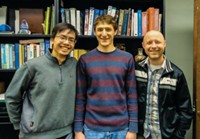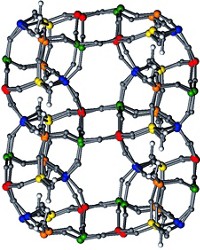Advertisement
Grab your lab coat. Let's get started
Welcome!
Welcome!
Create an account below to get 6 C&EN articles per month, receive newsletters and more - all free.
It seems this is your first time logging in online. Please enter the following information to continue.
As an ACS member you automatically get access to this site. All we need is few more details to create your reading experience.
Not you? Sign in with a different account.
Not you? Sign in with a different account.
ERROR 1
ERROR 1
ERROR 2
ERROR 2
ERROR 2
ERROR 2
ERROR 2
Password and Confirm password must match.
If you have an ACS member number, please enter it here so we can link this account to your membership. (optional)
ERROR 2
ACS values your privacy. By submitting your information, you are gaining access to C&EN and subscribing to our weekly newsletter. We use the information you provide to make your reading experience better, and we will never sell your data to third party members.
Analytical Chemistry
Spinning Improves NMR of Large Proteins
by Jyllian Kemsley
June 20, 2011
| A version of this story appeared in
Volume 89, Issue 25
A protein solution continuously spun in a rotor produces a sediment that yields high-quality nuclear magnetic resonance data, providing a new means to determine structures of large proteins, reports a research group led by Ivano Bertini and Claudio Luchinat of the University of Florence, in Italy (Proc. Natl. Acad. Sci. USA, DOI: 10.1073/pnas.1103854108). The approach melds protein ultracentrifugation, a common protein purification technique, with magic-angle spinning, an NMR method used to get structural information about amorphous solids. The team demonstrated the combination using an iron-free form of the iron-storage protein ferritin, which consists of 24 subunits and has a mass of 480 kilodaltons. Data from ultracentrifuged protein solutions match those from crystalline protein samples in both one- and two-dimensional experiments, the researchers show. The ultracentrifugation approach should facilitate study of proteins that are too large for typical solution NMR, they say. It will also enable experiments that are difficult to do with crystals, such as titrations with reagents.




Join the conversation
Contact the reporter
Submit a Letter to the Editor for publication
Engage with us on Twitter